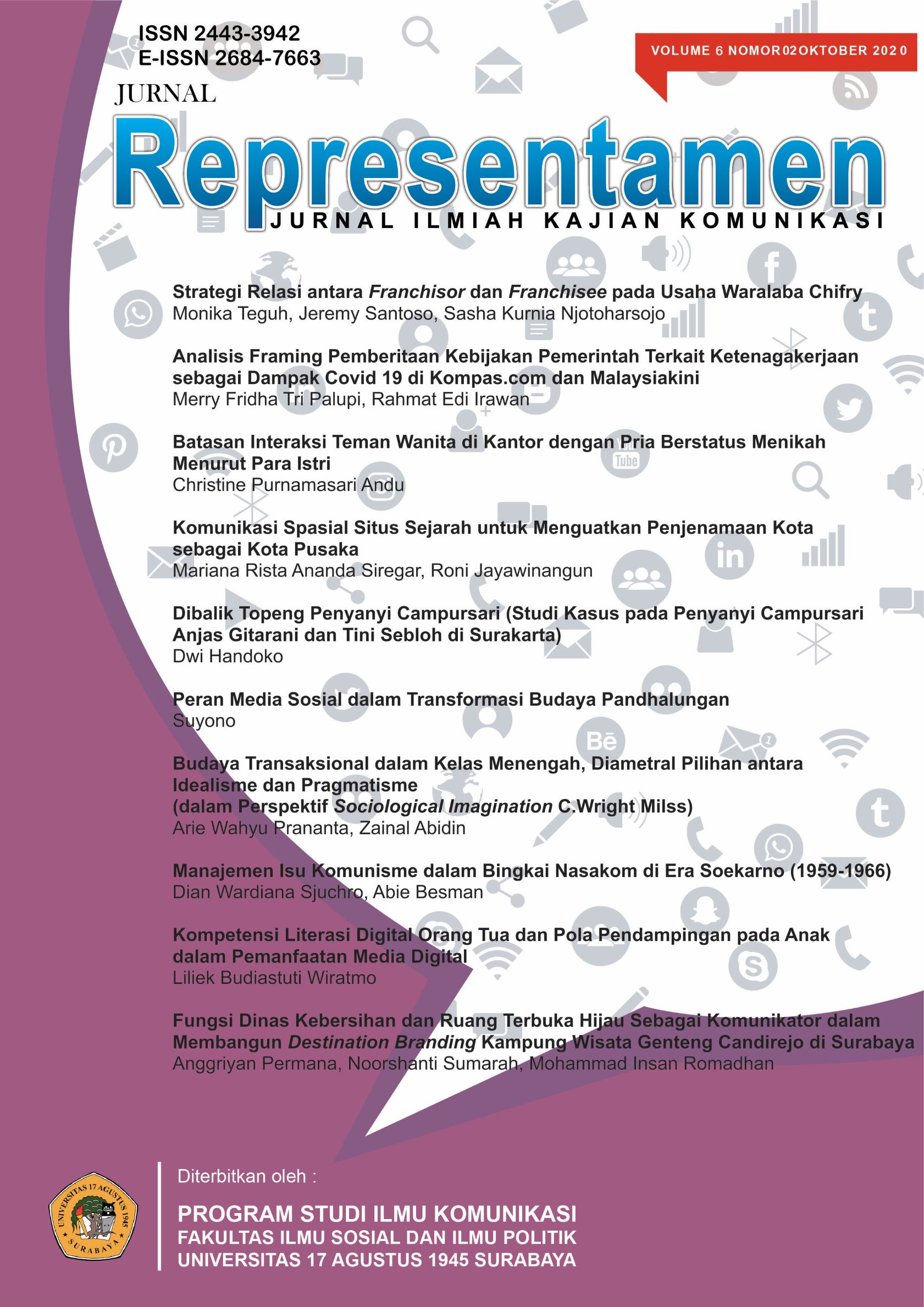Kompetensi Literasi Digital Orang Tua dan Pola Pendampingan pada Anak dalam Pemanfaatan Media Digital
DOI:
https://doi.org/10.30996/representamen.v6i02.4269Abstract
Abstract
The use of digital media is no longer dominated by adults. It has also become a part of children who are born as digital natives. This condition is certainly a challenge for parents because it is not possible to keep their children away from digital technology which offers various benefits. Therefore we need adults who are able to provide assistance to children in utilizing digital media. This article reveals how the patterns of parenting (in this case mothers) to children in utilizing digital media, what are the challenges faced and how to deal with these challenges. To answer this question, a qualitative descriptive approach was used. The informants who are the main data sources are working women and housewives who have children aged under five to 18 years, who are selected from the owners of active Facebook accounts (who in July uploaded their status, photos or other information). The findings of the study indicate that there are three patterns of mentoring, which were carried out by the informants, namely democratic-negotiation, permissive and protective. Parental Negotiative-Democratic Assistance allows the child to use the device, but there are negotiations, the child is invited to discuss, to determine when to hold the device, when to stop. Parental permissive assistance frees the child to use a device. Child protective assistance is given the opportunity to exist by having an Instagram account but is strictly controlled by parents.
Key words: digital native, mentoring, digital media, digital literacy.
Downloads
References
Hamilton, B. 2015. Integrating Technology in the Classroom: Tools to Meet the Needs of Every Students. Eugene, Oregon: International Society for Technology in Education
Knapp, P. & Watkins, M. 2005. Genre, Text, Grammar: Technologies for Teaching and Assessing Writing. Sydney: University of New South Wales Press.
Long, M. 1996. The role of the linguistic environment in second language acquisition. In W. C. Ritchie & T. K. Bhatia (Eds.), Handbook of language acquisition: Vol. 2. Second language acquisition (pp. 413- 478). New York: Academic Press.
Petrides, J.R. 2009. Hot Potatoes Review. Retrived June 02, 2019 from http://interactiveactivities.pbworks.com/w/page/20040755/hot%20potatoes%20review
Skehan, P. 1998. A cognitive approach to language learning. Oxford, UK: Oxford University Press.
Soleimani, H. & Raeesi, A. 2015. Hot Potatoes: The Merits and Demerits. Theory and Practice in Language Studies 3(6), 1291-1295
Vargas, J.P.Z. & Monge, G.Z. 2014. Considering the Use of Hot Potatoes in Reading Comprehension, Autonomy in TEFL, and Learning Styles. Revista de Lenguas ModeRnas 20, 309-321
Supratman, Lucy Pujasari. 2018. Penggunaan Media Sosial oleh Digital Native. Jurnal Ilmu Komunikasi Volume 15, Nomor 1, Juni 2018: 47-60.
Sutopo, H.B., (2002), Metodologi Penelitian Kualitatif, Surakarta: Universitas Sebelas Maret Press.
Unesco. 2018. A Global Framework of Reference on Digital Literacy Skills for Indicator 4.4.2, Montreal: UNESCO Institute for Statistics
Downloads
Published
Issue
Section
License
Authors whose manuscript is published will approve the following provisions:
The right to publication of all journal material published on the jurnal representamen website is held by the editorial board with the author's knowledge (moral rights remain the property of the author).
The formal legal provisions for access to digital articles of this electronic journal are subject to the terms of the Creative Commons Attribution-ShareAlike (CC BY-SA) license, which means Jurnal Representamen reserves the right to store, modify the format, administer in database, maintain and publish articles without requesting permission from the Author as long as it keeps the Author's name as the owner of Copyright.
Printed and electronic published manuscripts are open access for educational, research and library purposes. In addition to these objectives, the editorial board shall not be liable for violations of copyright law.











